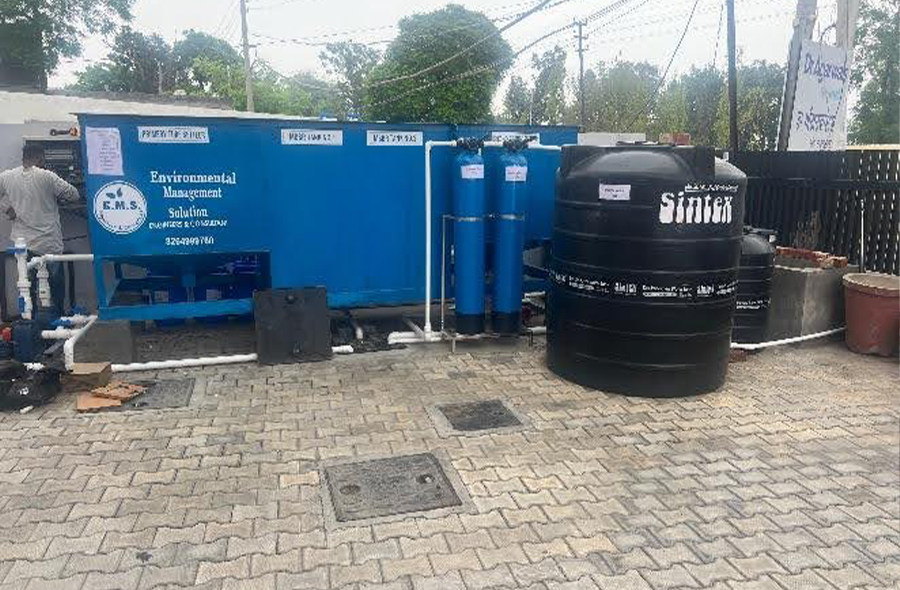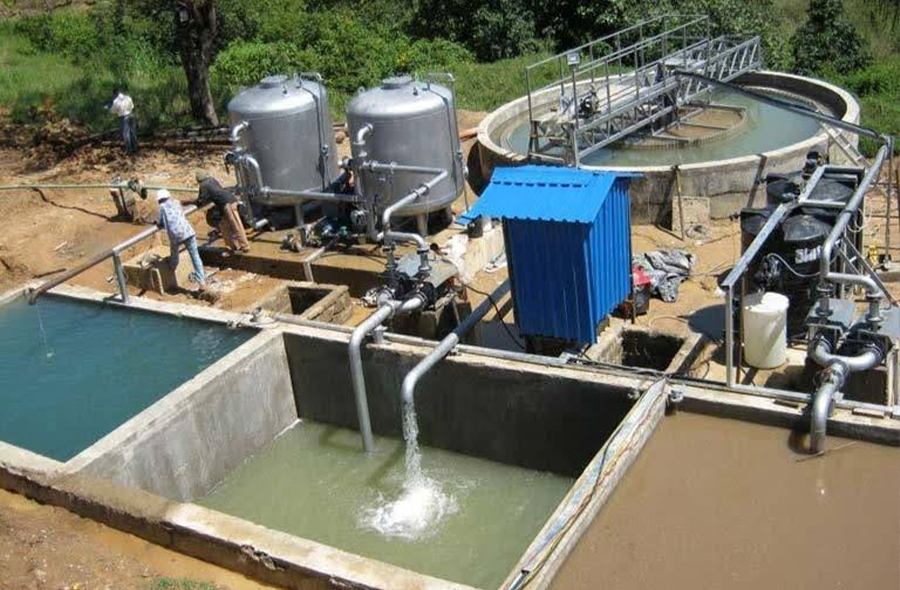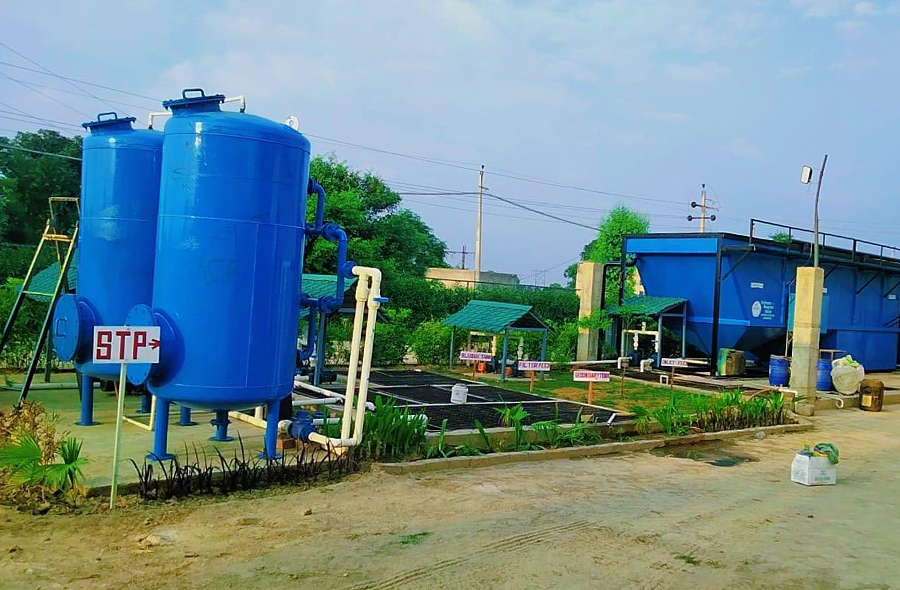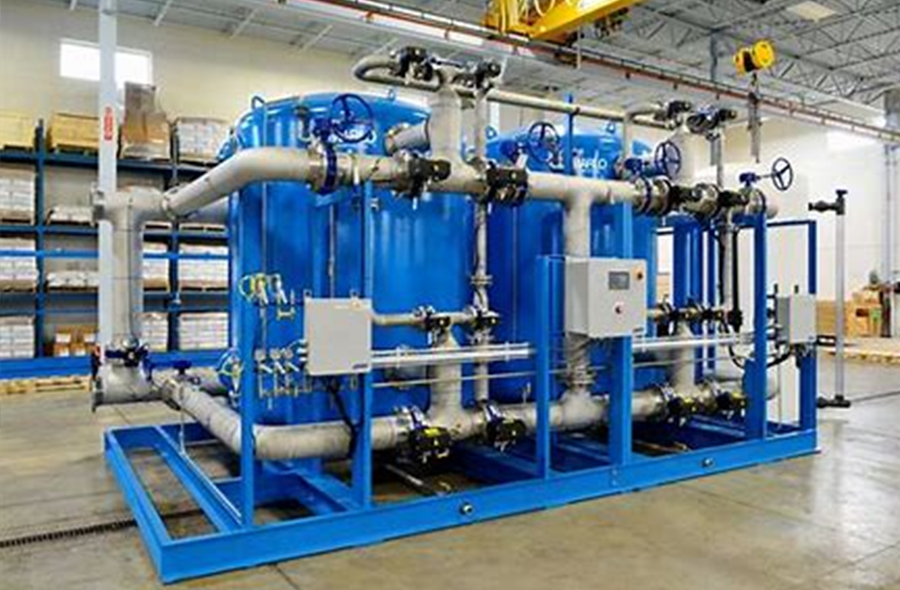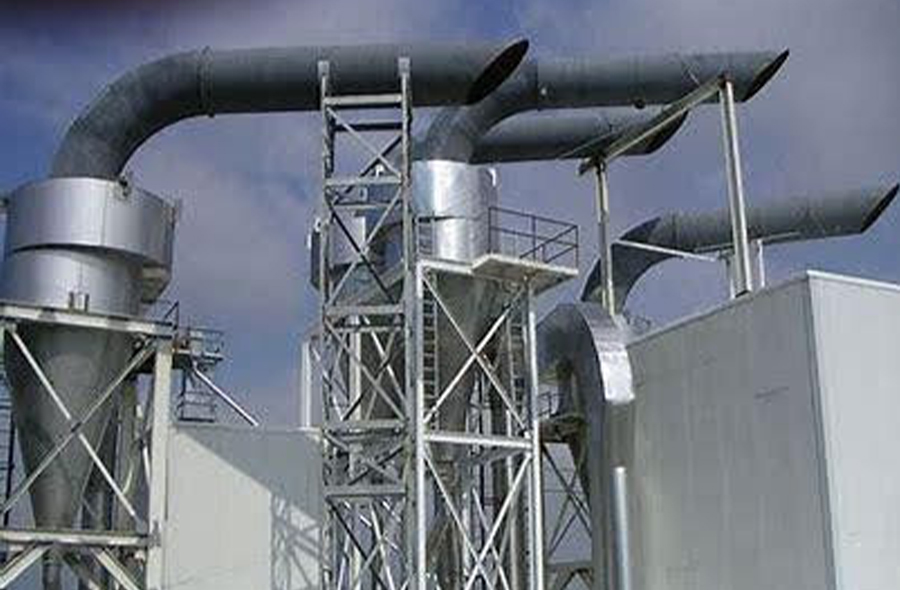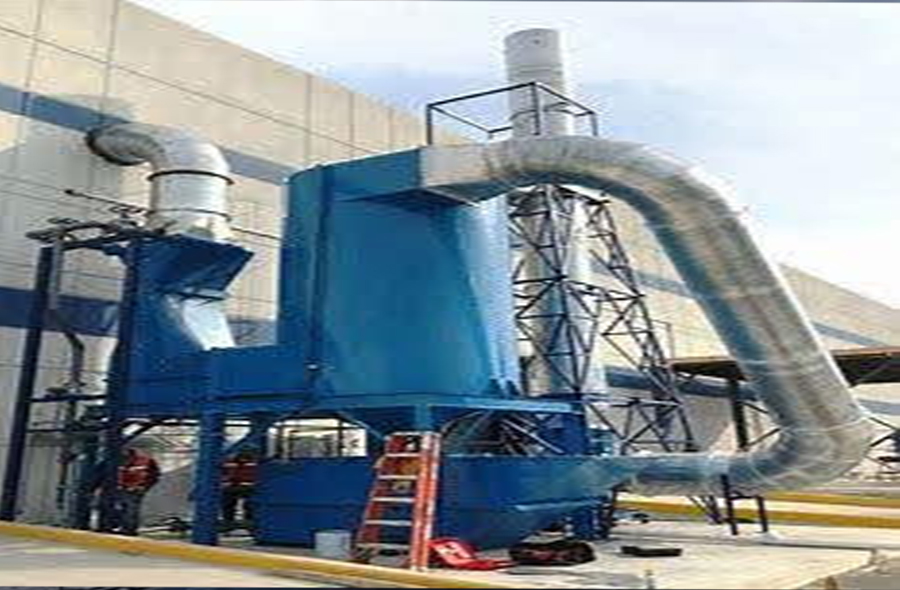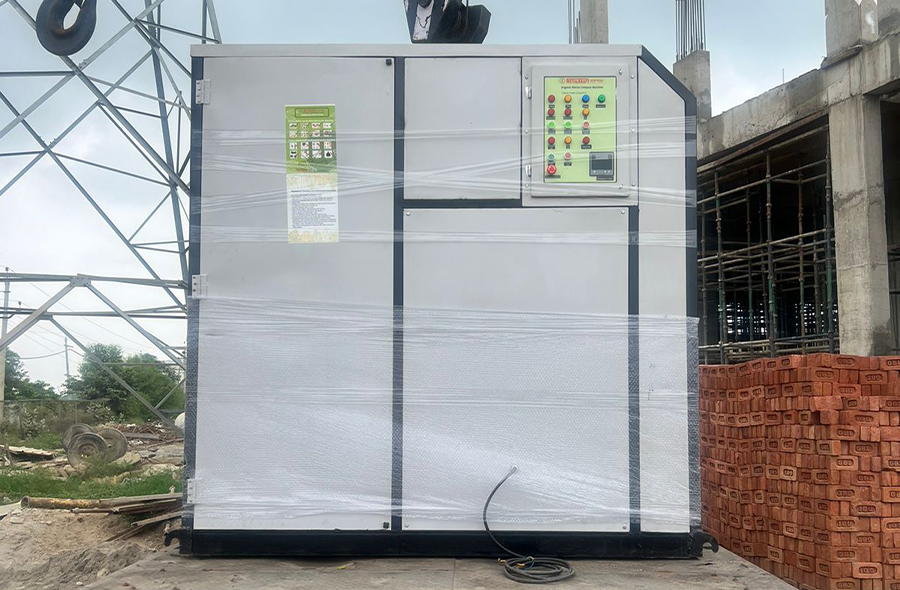1. Wastewater treatment
(a) Effluent Treatment Plant:
Effluent Treatment Plant (ETP) is an essential infrastructure in industrial settings designed to treat wastewater and mitigate environmental impact. It operates by removing contaminants and pollutants from industrial effluent before it is discharged into the environment or reused. ETPs typically involve a series of processes such as physical, chemical, and biological treatments to purify water, ensuring compliance with regulatory standards and safeguarding natural ecosystems.
(b) Sewage Treatment Plant:
The primary goal of an STP is to remove contaminants and pollutants from sewage before it is discharged back into the environment or reused for various purposes such as irrigation or industrial processes. STPs employ a variety of physical, chemical, and biological processes to purify sewage, ensuring that it meets regulatory standards and does not pose a health risk to humans or the environment.
2. Water treatment
(a) SOFTENERS:
Softeners work by exchanging these calcium and magnesium ions with sodium ions, thereby softening the water. The process typically involves passing hard water through a bed of ion exchange resin, which contains sodium ions. They help to improve the efficiency of water heating systems, reduce scaling in pipes and equipment, and enhance the performance of detergents and soaps.
(b) UV + RO:
UV (Ultraviolet) + RO (Reverse Osmosis) is a combined water treatment technology commonly used to ensure safe and high-quality drinking water in both residential and industrial settings.
3. Air Pollution Treatment
Air pollution treatment involves various technologies and strategies aimed at reducing the concentration of harmful pollutants in the air, thereby improving air quality and protecting public health.
(a) Cyclone Separator
(b) Wet Scrubber



